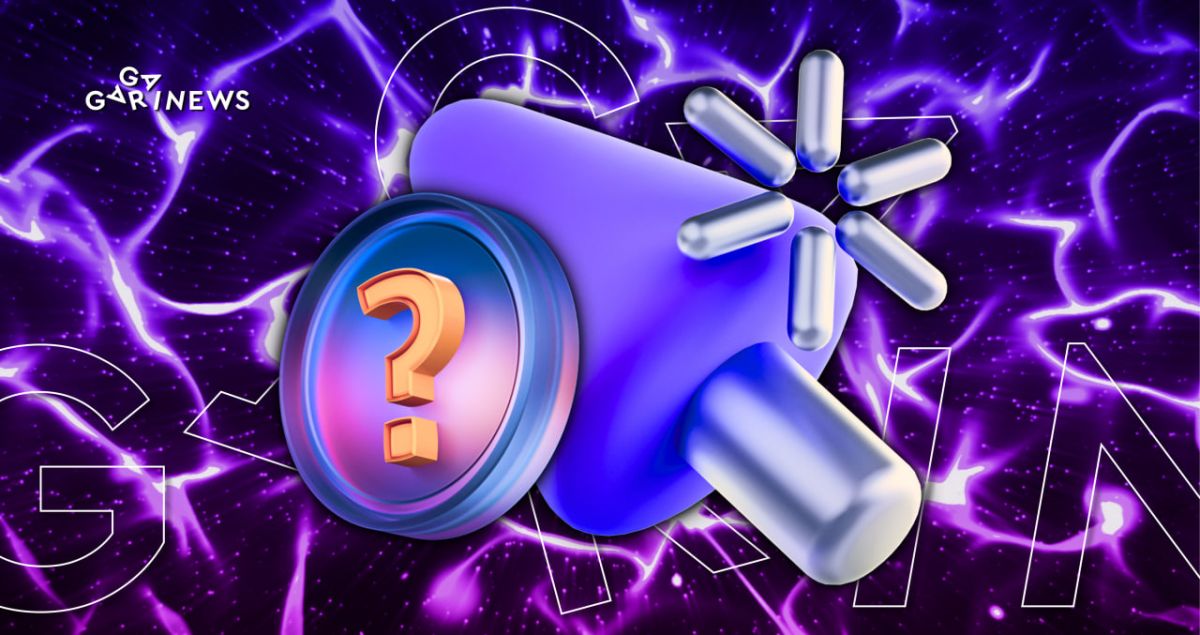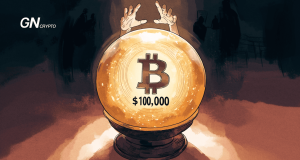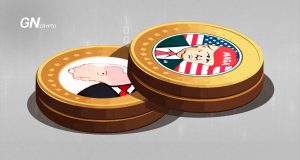NFTs: Why Get One?

The crypto-verse is often described as magnetic. There are so many coins to choose from and so many projects being kicked off all the time. Whether you are an avid Bitcoin or Ethereum fan, you have surely heard of another, no less enticing type of token – the non-fungible tokens (NFTs).
On this page
In this article, we will explore what sort of beast it is, why it has gained in popularity over the years, and what is in it for you.
What exactly are NFTs?
When it comes to NFTs, the key word is fungible. In other words, an item that is easily replaceable by another item of the same kind or mutually interchangeable. This holds for most assets out there: from the regular dollar bill to Bitcoin and Ethereum.
Non-fungible tokens, however, are not mutually interchangeable. Much like artwork, they are unique, one-of-a-kind pieces that belong to yourself only.
Unlike physical artwork, though, they are exchanged between users online via blockchain technology, the transactions of which are transparent and immutable. In other words, you end up seeing a digital trail, akin to certificates of ownership, that ensures that what you own is indeed unique and sought-after collectible.
Being part of the metaverse, which is an online virtual world where individuals experience a variety of interactions, environments, and objects, NFTs have become indispensable. To that end, a recent report by Kraken Intelligence states that the use of non-fungible tokens (NFTs) differentiates centralized metaverses from the crypto ones, as NFTs empower individuals with control over their digital assets.
When were they introduced?
The coins were first mentioned in 2012 when Meni Rosenfield, Israeli bitcoin researcher and mathematician, released a paper, describing the NFT tech as colored coins.
Because the Ethereum blockchain had not been around then, these colored coins were supposed to be issued on the Bitcoin blockchain.
Over time, however, the smart contracts developed, paving the way for the first known NFT minted on May 3, 2014 by digital artists Kevin McCoy and Anil Dash. Called Quantum, it featured a short video clip of McCoy's wife Jennifer. Dash later bought this clip on the Namecoin blockchain for $4.
Meanwhile, Terra Nullius was the first NFT on the Ethereum blockchain with a mint date of August 7, 2015.
When did they become big?
CryptoKitties is, arguably, one of the first NFT games that made headlines, proving just how popular cats really are on the internet. The game offers its users a variety of kitties that, according to the game’s site are “one-of-a-kind and 100% owned by you; they cannot be replicated, taken away, or destroyed.” The idea of the game is to buy, sell, and breed CryptoKitties. When you breed two CryptoKitties, you get a new one with Cattributes based on the genes of its parents. It is also possible for CryptoKitties to mutate, with a newborn having a trait that it didn't inherit from either of its parents.
Just several days after its launch in 2017, the game made a whopping profit, with one of the early users buying a CryptoKitty for more than $100,000 and the game recording over $1 million in sales.
Cryptopunks is another great example of the early crypto projects. Known for its pixelated pictures of random punk faces, it is an Ethereum-based blockchain launched by the Larva studio in 2017. The inspiration came from the London punk scenes, the cyberpunk movement, and electronic music artists Daft Punk.
The project is still in vogue. Recently, Cryptopunk #4,464 was sold for 2,500 ETH on a Tuesday, which equaled over $2,62 million at the time of purchase.
Which other projects have made headlines?
Since the CryptoKitties and Cryptopunks entered the NFT space, many other projects followed.
Among them is the Bored Ape Yacht Club, one of the most well-known NFTs in the market. Portraying apes wearing different outfits, the project struck a chord with many celebrities, including Madonna. In March, she bought a Bored Ape No. 4988 worth over half a million dollars at the time. Other big names owning Bored Apes include TV host Jimmy Fallon, Justin Bieber, Kevin Hart, Paris Hilton, and many more.
Enjin and Opensea are also projects entirely focused on NFTs. They created a marketplace for exchanging rare collectibles while the Axie Infinity game is the ultimate go-to space for the NFT collectors, with Axies being fierce creatures that love to build, battle, and hunt for treasure.
These are, however, just several NFT projects. Their list continues to grow, with the Yeti Yacht Club launching a new exclusive project offering to immerse users into the world of luxury. The plan is to give NFT holders access to regular parties with guest stars, private events on the island, and trips on one of the largest yachts in the world that holds up to 600 people.
So, why would I get one?
Above all, because NFTs are truly unique.
Many people have a thing for collectibles of all sorts. Just think of all those folk who systematically look for rare stamps or the likes. Compared to stamps, however, NFTs are genuinely one-of-a-kind pieces that no one owns but yourself. They are the Mona Lisas of the digital world if you will.
They are also a good investment, even though not a risk-free one. According to the mentioned report by Kraken, the metaverse tokens have experienced a massive price boost over the years, going up 395% within one year. It also underscored that NFTs play a significant role in the growth of blockchain-based gaming, which makes up a part of the metaverse. The top projects include the Sandbox, Decentraland, Somnium Space, CryptoVoxels, and SuperWorld.
Stay tuned.
The content on The Coinomist is for informational purposes only and should not be interpreted as financial advice. While we strive to provide accurate and up-to-date information, we do not guarantee the accuracy, completeness, or reliability of any content. Neither we accept liability for any errors or omissions in the information provided or for any financial losses incurred as a result of relying on this information. Actions based on this content are at your own risk. Always do your own research and consult a professional. See our Terms, Privacy Policy, and Disclaimers for more details.

























